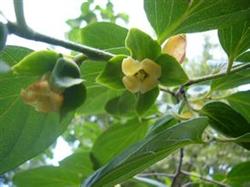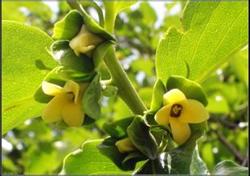Shaping and winter pruning of persimmon trees
First, shaping: Persimmon trees meet the needs of dwarfing and dense planting cultivation, mainly using natural happy shape, changing trunk shape and trunk sparse layer shape and so on. The characteristics of the sparse layer shape of the trunk: there are obvious central leading trunk, and the main branches are distributed in layers, including 3 main branches in the first layer, 2 main branches in the second layer, 1 main branch in the third layer, staggered between the upper and lower layers, and the distance between layers is 60-70 cm. Each main branch bears 2-3 lateral branches, the distance between the two branches is about 60 cm, and the bearing branches are on the lateral branches. The height of the trunk is about 1 meter. The trunk sparse layer shape is suitable for orchards with poor site conditions, and the natural happy tree shape can be used in orchards with better site conditions. After entering the full fruit period, in order to make the operation more convenient, the trunk sparse layer and retain the first layer of main branches can be improved to happy tree shape without affecting the yield. Second, winter pruning 1. Pruning of fruiting mother branches: a sufficient number of fruiting mother branches must be retained in winter pruning, and the fruiting branches of the previous year are less, which can be reserved as this year's fruiting mother branches. When the fruiting mother branch is too dense, it remains strong and weak, and staggers from left to right. two。 Pruning of developmental branches: thinning the weak branches in the lower part of the inner chamber or large branches. The moderately developed branches of 25-45 cm are easy to form flowers and form fruiting mother branches, which can be cut off by 1 stroke 3, and the short ones are not short. The development branches that are too dense can be removed by "staying and pouting" to promote the formation of the golden mean twigs in the second year. When cutting the developing branches at the young stage, attention should be paid to the outward direction of the first bud under the cutting mouth.
- Prev

Management of persimmon trees before and after flowering
The management of persimmon trees before and after flowering persimmon trees belong to light-loving crops, dense cultivation pay attention to solve ventilation and light transmission, this is the main measure of high-yield management, persimmon tree results are axillary bud results, so thinning out long branches, strengthening branch nutrition accumulation is very important, pay attention to amino acid coating before flowering, promote flower bud differentiation, overcome size...
- Next

Disease control of persimmon trees
Fertilizer and water management at flowering stage in ecological persimmon orchard is an essential and specific measure. The aim is to push the growth order of persimmon to the most exciting part. Highlight the supply of nutrients in order to achieve the best effect of flower and fruit protection. In this way, all the inappropriate means and measures in the flowering management of persimmon orchard are omitted. Both very well.
Related
- Moge, come on! The staff of the peasant association in the producing area of cantaloupe were frightened when the crowd gathered.
- Causes and Solutions of low Fruit setting rate of Apple
- Symptoms and control measures of passion fruit virus disease
- Fruit growing lesson: how do apple orchards keep high yields?
- Can you build orchards in the mountains? What are the pros and cons?
- How to manage the coloring period of Crisson grape?
- This paper introduces the processing technology of two kinds of fig products.
- How much is a month for retired teachers in rural areas by 2020?
- How can strawberry planting increase sugar content? We should pay attention to management in many aspects.
- What are the cultivation techniques on how to improve the yield of golden fruit?

